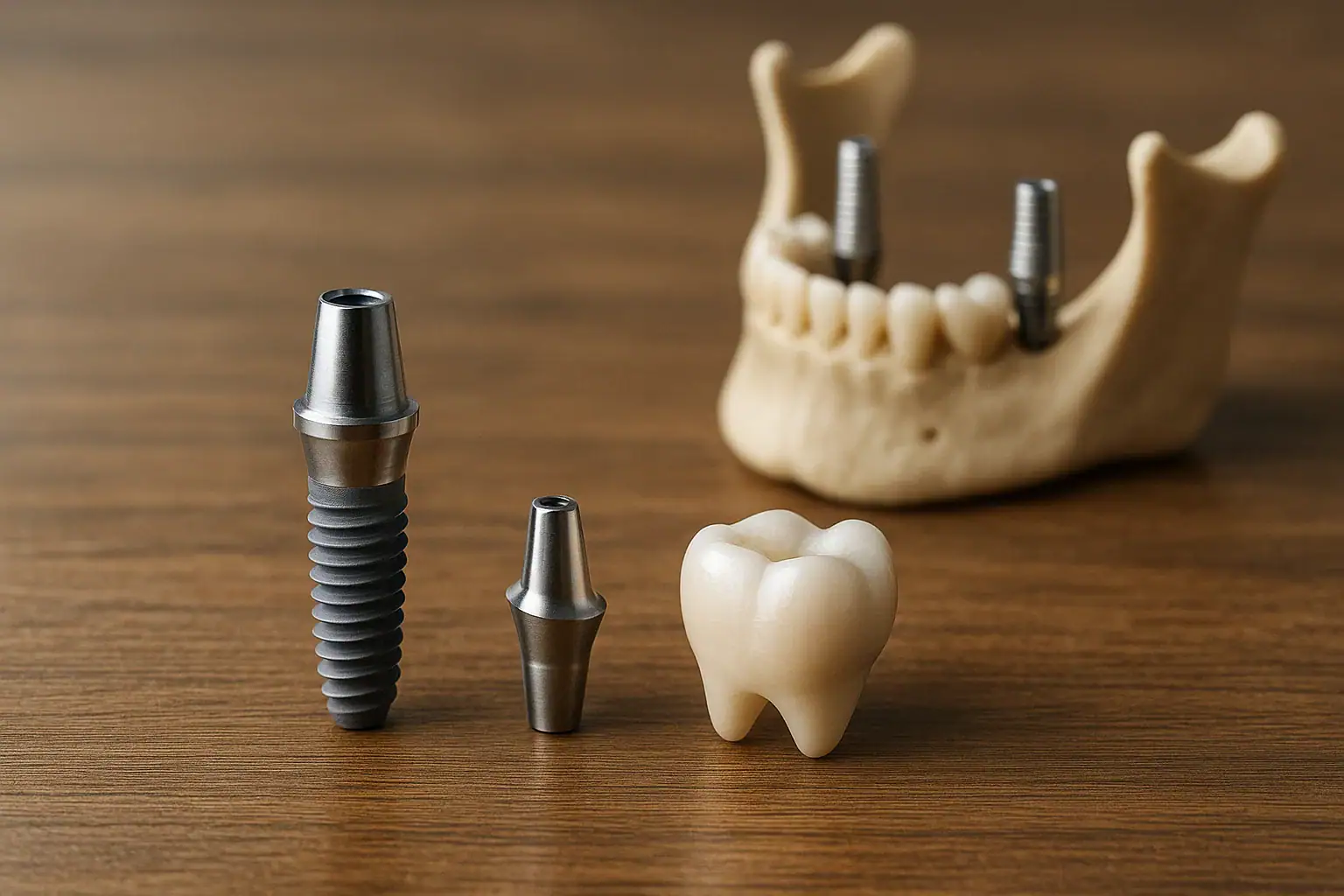Menu
Free Consultation

In modern restorative dentistry and implantology, the term abutment plays a crucial role. Whether you're getting a dental implant or researching prosthetic support options, understanding what an abutment is and how it functions is vital.
An abutment acts as a connector it abuts the implant on one end and supports a dental crown, bridge, or denture on the other. In simpler terms, it is the intermediate structure that abuts two dental elements, helping secure artificial teeth.
In this comprehensive guide, we’ll dive deep into what a dental abutment is, how it functions, its types, materials, and its significance in implant dentistry. We’ll also explore the meaning of abut, abutting, and abuts as they relate to both dentistry and general language usage.
Before we jump into dental specifics, let’s clarify the term “abut.”
Example in General Use:
“The property abuts the river.”
Example in Dental Use:
“The crown abuts the abutment for stability.”
These terms are foundational to understanding how dental restorations function structurally.
A dental abutment is a small connector piece used in dental implant procedures. It is placed on top of a dental implant (a titanium screw placed in the jawbone), and serves as the anchor for a crown, bridge, or denture.
Understanding the different types of abutments can help both patients and clinicians make informed choices.
Also known as a healing cap, this abutment is placed immediately after implant surgery to promote soft tissue healing.
Once healing is complete, a permanent abutment is placed to support the final crown or prosthesis.
Fabricated specifically for the patient's mouth using digital impressions or traditional molds, custom abutments provide enhanced esthetics and fit.
Pre-manufactured by implant companies, stock abutments are standardized in shape and size and are often used in straightforward cases.
The material of an abutment plays a vital role in both the functionality and aesthetic outcome of the dental restoration.
Your dentist will choose the abutment material based on:
Understanding the abutment procedure can ease anxiety and increase patient cooperation.
An abutment tooth refers to a natural tooth used to support a dental prosthesis like a bridge or partial denture.
In a dental bridge, the two natural teeth adjacent to a missing tooth are called abutment teeth. They are crowned and support the bridge between them.
| Feature | Implant-Supported Abutments | Tooth-Supported Abutments |
|---|---|---|
| Support Base | Dental Implant (artificial root) | Natural Tooth |
| Procedure Type | Surgical | Conservative (if bridge) |
| Durability | High (with good bone integration) | Depends on tooth health |
| Common Usage | Crowns, bridges, overdentures | Bridges, removable partial dentures |
Modern dental technology has revolutionized how abutments are made. With CAD/CAM systems, dentists can create custom abutments that match the patient's unique oral anatomy.
This approach is especially useful for patients with complex implant positions or those requiring high esthetic results.
When placing crowns on abutments, there are two primary attachment methods: screw-retained and cement-retained.
The choice depends on the implant’s location, esthetic requirements, and the dentist’s clinical judgment.
Abutments can be placed either immediately after implant surgery or after a healing period.
Your oral surgeon will decide the best approach based on your healing potential and surgical conditions.
Many patients ask, “What does a dental abutment actually look like?” Here's a simplified visual description:
Understanding these visuals can help reduce anxiety and increase treatment acceptance.
Proper care of the abutment and surrounding tissue is essential for long-term success.
Regular dental cleanings will also help detect early signs of irritation or peri-implant mucositis.
In cases involving tooth-supported bridges, if the abutment tooth (natural tooth) decays, fractures, or develops gum disease, the entire bridge may fail. That’s why:
Proper alignment of abutting teeth and prosthetics is critical for:
When a dental crown abuts adjacent teeth with the right contact and contour, it supports both function and esthetics.
An abutment is a connector piece that links a dental implant with the crown or denture above it.
Its purpose is to provide a stable foundation for prosthetics, ensuring proper alignment, function, and esthetics.
The procedure is usually done under local anesthesia, and discomfort is minimal. Most patients report only mild soreness for a few days.
With proper oral hygiene, an abutment can last 10–15 years or even longer.
Yes. If proper care isn’t taken or there is bone loss, abutments can loosen or get infected. Regular dental checkups are essential.
The term abutment may sound highly technical, but its role in modern restorative dentistry is foundational. Whether it's connecting a crown to an implant or anchoring a dental bridge, abutments abut — that is, they connect, support, and stabilize.
Choosing the right type of abutment and caring for it properly ensures the longevity of your dental work and maintains your oral health for years to come.
If you're considering a dental implant or bridge, talk to your dentist about the best abutment options for your specific needs. With the right support system — both literal and clinical — your smile can remain strong, stable, and beautiful.
